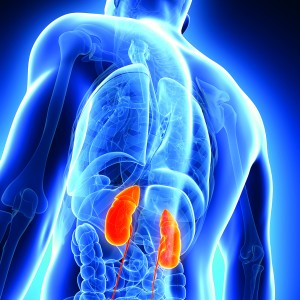5 Medical Breakthroughs in 2013 that will Impact You in the Near Future
A look at improving things for yourself and your loved ones in 2014 would not be complete without looking back at the achievements of 2013. For example, did you know that scientists worldwide made numerous discoveries and breakthroughs last year that are bound to impact our lives? Here’s a look at some of the major ones.
Breakthrough 1 : Turning Poor Quality Eggs into Healthy Ones
Poor quality eggs are one of the reasons that some women struggle to get pregnant. But researchers at Stanford University developed a technique that helps women with ovarian insufficiency to produce healthy, mature eggs again. The process, called in vitro activation, involves removing an ovary or piece of ovarian tissue and treating it in a lab with proteins and other factors that help the immature follicles it contains to develop into eggs. The recharged tissue is then reimplanted near the fallopian tubes. So far, of the 27 women who volunteered to test the technique, five produced viable eggs, one woman is pregnant and another gave birth to a healthy baby.
Breakthrough 2 : Less Is More: One Dose of Vaccine Instead of Three May Be Enough to Protect Against HPV
The human papillomavirus (HPV) vaccine is one of the best ways to protect against genital warts and cervical cancer, but only about half of girls and boys aged 11 and 12 have completed all three doses of the immunization. Fortunately, if the latest research from an international group of researchers is confirmed, they may not have to. The scientists found that a single dose of the vaccine generated 24 times more antibodies than produced after an actual infection with the virus, among a group of women in Costa Rica. While it’s not clear whether these levels would be enough to protect against infection, and lower the risk of cancer, the results suggest that even one dose of the vaccine may be enough to provide some protection against HPV.
Breakthrough 3 : Human Cloning… to Produce Embryonic Stem Cells
It took 17 years and a scandal involving scientific fraud and embezzlement, but stem cell scientists have finally accomplished with human cells what a scientist long ago did with a ewe – cloning. Using human skin cells, Shoukhrat Mitalipov, a professor at Oregon Health & Science University, applied the same process, known as nuclear transfer, that produced Dolly the sheep in 1996, the first cloned mammal. A previous attempt by South Korean researchers turned out to be fraud when it was revealed the team used embryos generated by IVF instead of nuclear transfer to generate its so-called human clones.
Mitalipov’s goal wasn’t to generate mini-mes, however. Instead, he successfully inserted a fully developed skin cell into a hollowed out human egg, and chemically and electrically stimulated the egg to start dividing to produce embryonic stem cells. (The procedure went no further than that—no walking, talking clone.) Stem cells serve as the cellular foundation for the rest of the body’s tissues and organs, and the hope is that they may one day be used to treat diseases ranging from Alzheimer’s to heart disease and diabetes.
Breakthrough 4 : The First Home Pregnancy Test That Tells You How Pregnant You Are
Pregnancy tests just got an upgrade. The Clearblue Advanced Pregnancy Test with Weeks Estimator is the first such test approved by the Food and Drug Administration that not only detects pregnancy, but measures how far along it is, based on time since ovulation. The test uses levels of the same hormone that signals pregnancy, human chorionic gonadotropin, to make its estimate.
Breakthrough 5 : Road to the End of AIDS: A Newborn Is Functionally Cured of HIV
It seemed almost too good to be true, so Dr. Hannah Gay, a pediatrician at University of Mississippi Medical Center, checked the numbers again. But they told the same story. A toddler born to a mother infected with HIV was, after two years, seemingly free of the virus. The infant was functionally cured of HIV.
The baby, who showed signs of infection just after birth, was able to shed its viral load thanks to a combination of three anti-HIV drugs that doctors normally use to treat older infants and adults. Generally, doctors give both the HIV-positive mom and newborn baby a single antiretroviral drug during delivery to stop transmission of the virus from mother to child. But because the baby’s mother did not know she was HIV positive, that precaution wasn’t taken. So Gay and her colleagues took a chance on the more potent drug cocktail. It worked, and the virus has not returned, even after the child stopped taking the medications.
Experts are hedging their celebrations, especially in light of the latest research showing that up to 60% more HIV may lie dormant in infected individuals than previously thought. These reservoirs could potentially seed new infections and cause new symptoms. But the Mississippi toddler represents the hope that if doctors can intervene early enough after HIV infection, there might be a chance of stopping the disease altogether.








